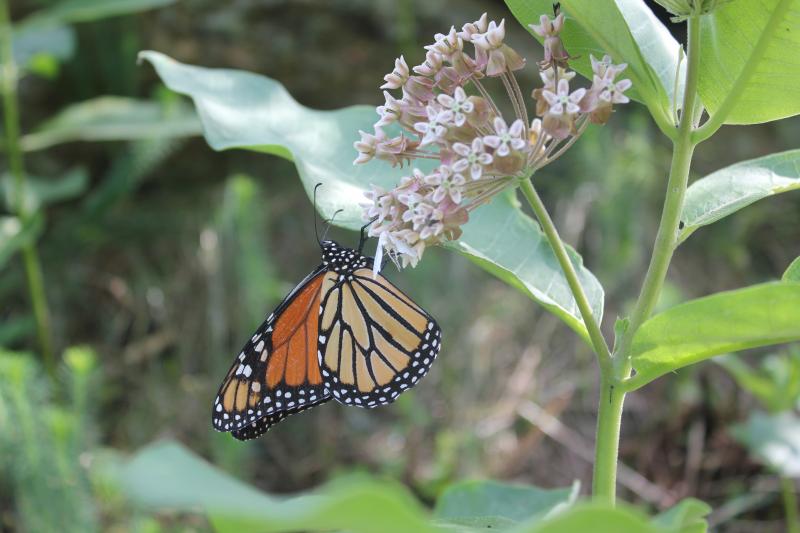Where are all the monarchs?
 Monarch butterflies’ beauty and fascinating life cycle make them a familiar and much-loved garden staple. But their populations are in steady decline and few were seen in Maine this year. SUE MELLO/Boothbay Register
Monarch butterflies’ beauty and fascinating life cycle make them a familiar and much-loved garden staple. But their populations are in steady decline and few were seen in Maine this year. SUE MELLO/Boothbay Register
 Monarch butterflies’ beauty and fascinating life cycle make them a familiar and much-loved garden staple. But their populations are in steady decline and few were seen in Maine this year. SUE MELLO/Boothbay Register
Monarch butterflies’ beauty and fascinating life cycle make them a familiar and much-loved garden staple. But their populations are in steady decline and few were seen in Maine this year. SUE MELLO/Boothbay Register
Monarch butterflies are one of the delights of a Maine summer. From late July into early fall, we are graced with their companionship in the garden and we are allowed a glimpse into the miracle that is their life cycle.
But this year monarch butterflies are at record low numbers nationwide and are virtually absent here.
Coastal Maine Botanical Gardens Executive Director Bill Cullina said he has not seen a single monarch butterfly at the Gardens this summer.
“Last year, we were overwhelmed with monarchs and other butterflies,” Cullina said. “This year, not a single Monarch and not a lot of other butterflies. There have been startlingly few.”
Cullina said monarchs usually arrive at the Gardens by August and go through one or two brood cycles here if the weather is right. “By this time, there are usually lots around. But this year, they never showed up when they normally do,” he said.
Boothbay Region Land Trust Environmental Educator Tracey Hall, who is regularly out of doors for work and play, said she also has not seen a monarch this summer.
Hall said she recently did a Land Trust insect walk at Singing Meadows. “Usually there are lots of monarchs, but this year we didn't see any,” Hall said. “There is lots of milkweed there and we checked for eggs and caterpillars but found none.”
Since 2005, the Maine Butterfly Survey, a collaborative effort spearheaded by the Maine Inland Fish and Wildlife, Maine colleges and universities and private organizations, has tracked the distribution and abundance of butterflies across the state.
Dr. Herb Wilson, a Colby Biology Professor and Maine Butterfly Survey Coordinator, said what we are not seeing in the Boothbay Region is typical for Maine this year.
“In our survey, we have found very few monarchs,” Wilson said. “Most surveyors haven't seen any at all. Those that have, have seen very few.”
Wilson said Monarch populations in Maine are “awfully variable” but this was the worst year he can remember.
What's happening?
Monarch butterflies are known for their long-distance migrations and their dependence on common milkweed.
In spring, monarchs gradually spread northward from their overwintering grounds in Mexico and California through successive breeding generations. Monarchs may produce two to five complete generations each year, depending on weather conditions. As they reproduce, the expanding population spreads north.
In fall, the reproductive cycle stops and individual monarchs fly up to 2,500 miles and return to their overwintering grounds.
Monarch butterflies lay their eggs only on common milkweed. The eggs develop into wildly striped caterpillars that devour the milkweed, and in doing so, gain the milkweed toxin that potential predators find distasteful. Eventually, the engorged caterpillars morph into silent green and yellow iridescent cocoons, where they are miraculously transformed into adult monarch butterflies. And the cycle continues.
The monarch's dependence on milkweed and its sensitivity to temperature make it particularly vulnerable to environmental change and researchers have noted a long-term decline in its abundance.
Since 1994, researchers from the U.S. and Mexico have documented a steady decline in monarchs on their overwintering grounds. The 2012-13 winter population was the lowest recorded to date. Thus, the population that began its trip north last spring was at a record low.
Dr. Chip Taylor, a leading Monarch researcher at the University of Kansas, points to habitat loss and temperature changes, which affect breeding success and longevity, as key factors affecting Monarch populations.
Taylor reports that the widespread adoption of corn and soybean crops resistant to herbicides coupled with intensive herbicide use, as well as, the federal government incentivized expansion of corn and soy acreage for the production of biofuels have caused a significant drop in milkweed throughout the heart of the Monarch's range.
Less milkweed means fewer monarchs.
“Monarch/milkweed habitat has declined significantly in parallel with the rapid adoption of glyphosate-tolerant corn and soybeans and, since 2006, the rapid expansion of corn and soy acreage to accommodate the production of biofuels,” Taylor wrote on May 29.
Temperature is also a factor in the decline although a more complex one. Cold winter temperatures can reduce survival and successful reproduction is affected both by temperature and drought.
Dissuading agribusiness from its reliance on genetic engineering and herbicides and controlling adverse weather conditions are daunting undertakings. But Taylor suggests that habitat loss can be stemmed through a collective effort.
“The good news is that we can do something about the habitats in the United States and Canada — we can plant milkweed," Taylor wrote.
Here in Maine, most of our milkweed waited in vain this year for monarchs that never arrived.
Being at the tail end of a long migration somewhat limits what we can do to help monarchs. “There's not a whole lot we can do here locally,” Wilson said, “other than planting milkweed, raising pupae and encouraging conservation organizations that conserve land.”
Hall said despite the bad year, she remains optimistic. “I have hope for changes in other areas and that next year will be better,” she said.
Hall said for her, Rachel Carson's message and example still ring true. “Carson noticed the silence that spring and she spoke up and made change. Being a voice and standing up for these creatures is important,” Hall said.
Sue Mello can be reached at 207-844-4629 or suemello@boothbayregister.com
Event Date
Address
United States























